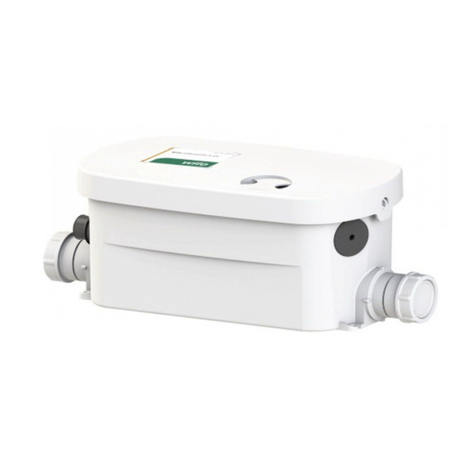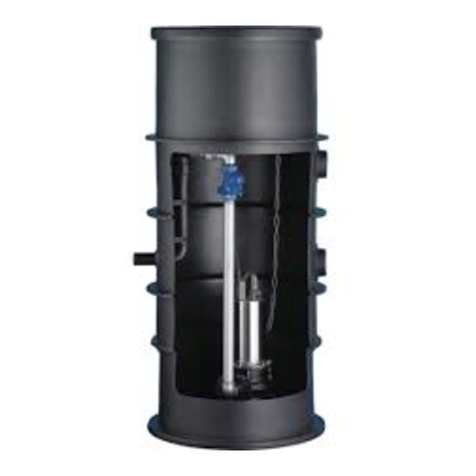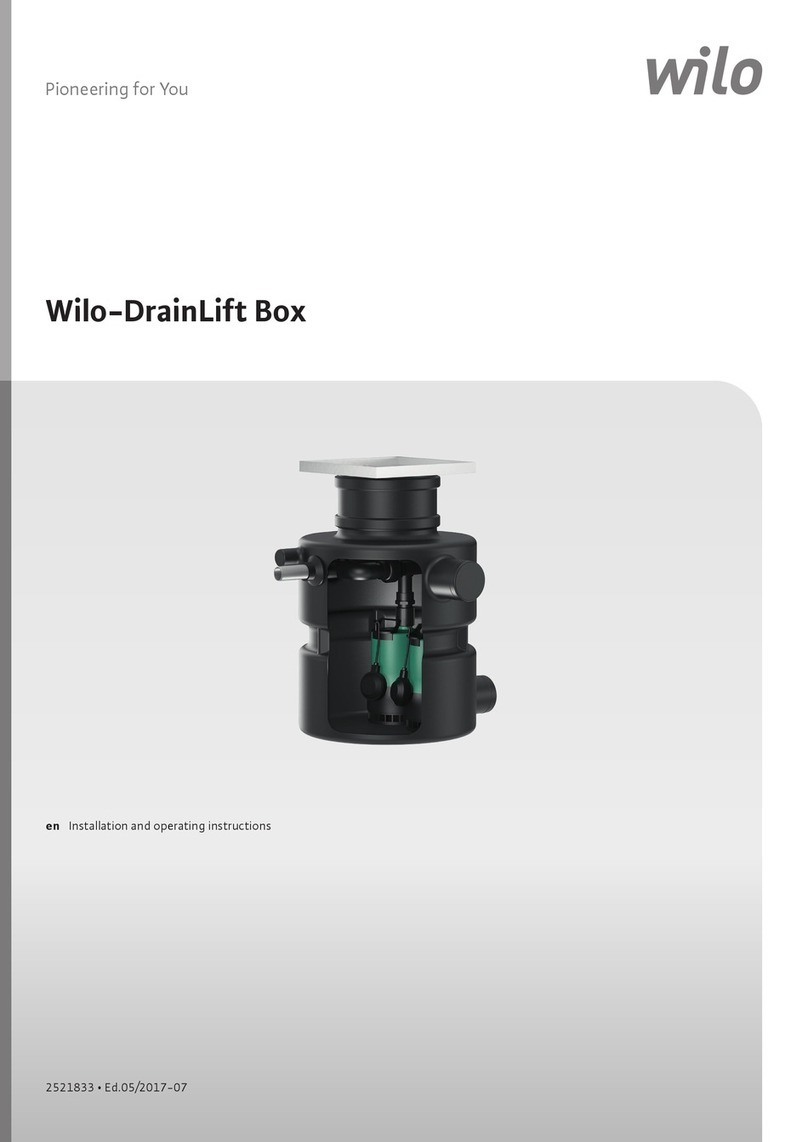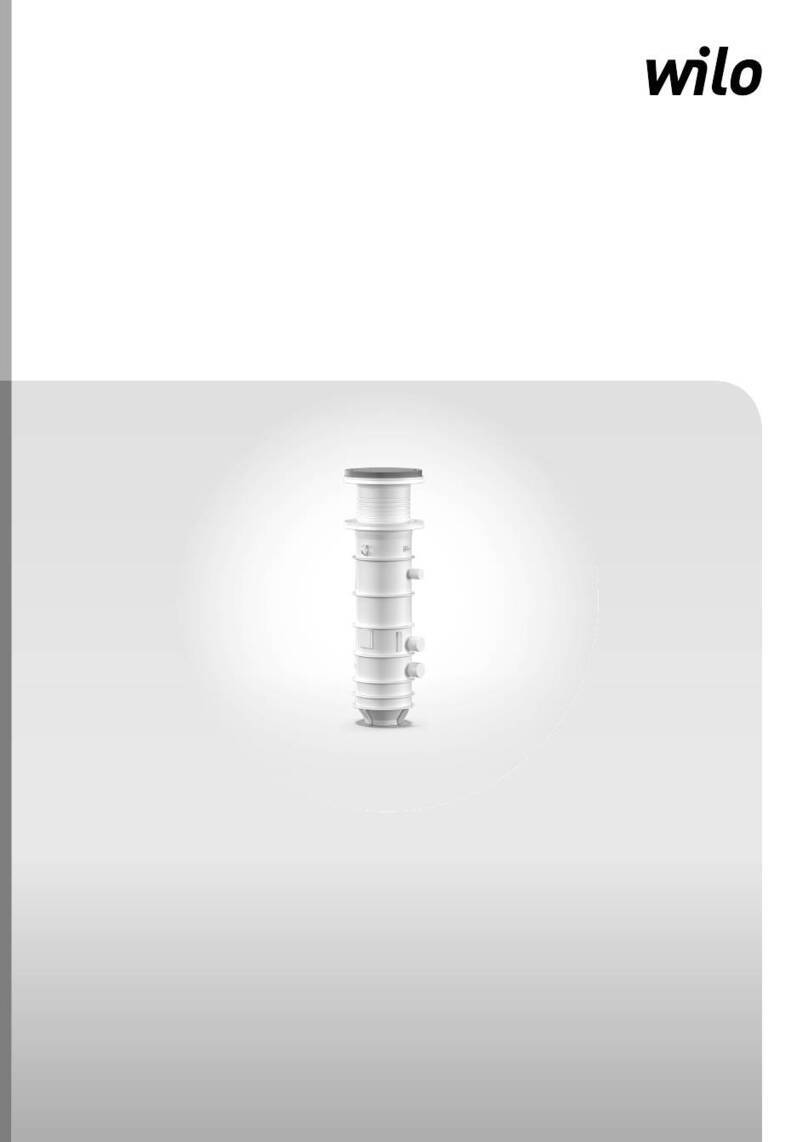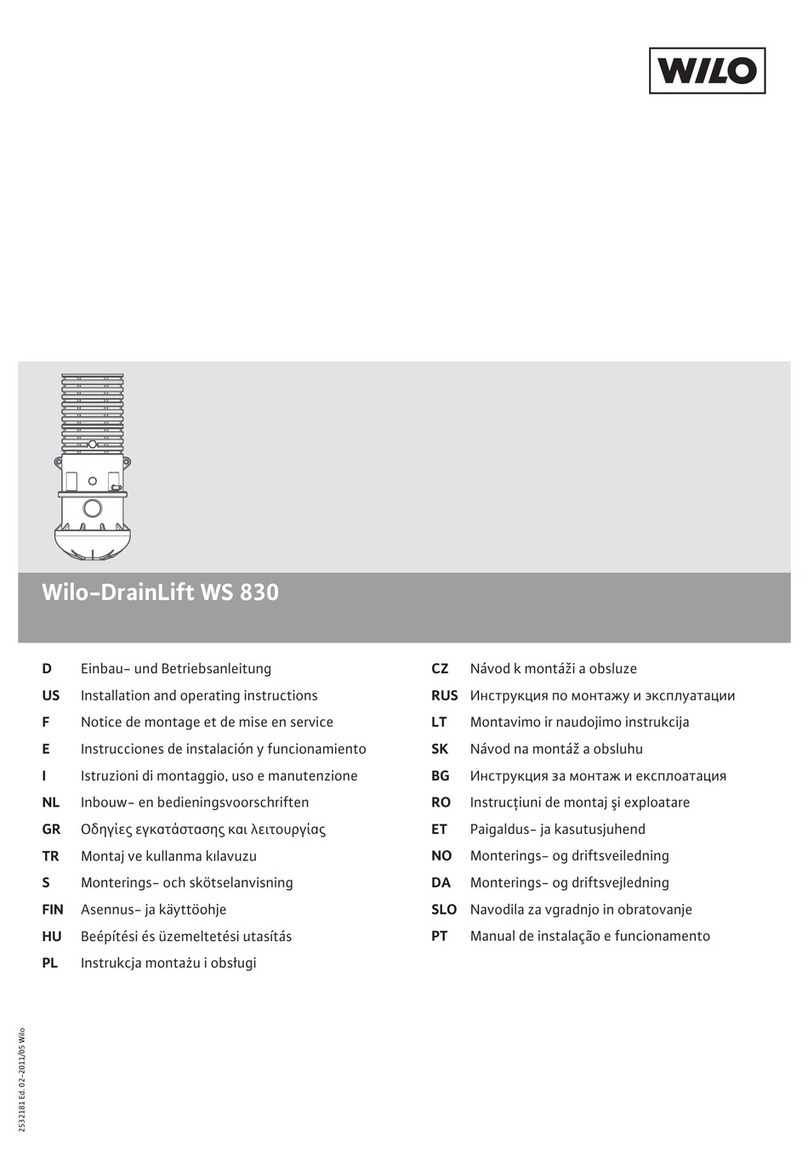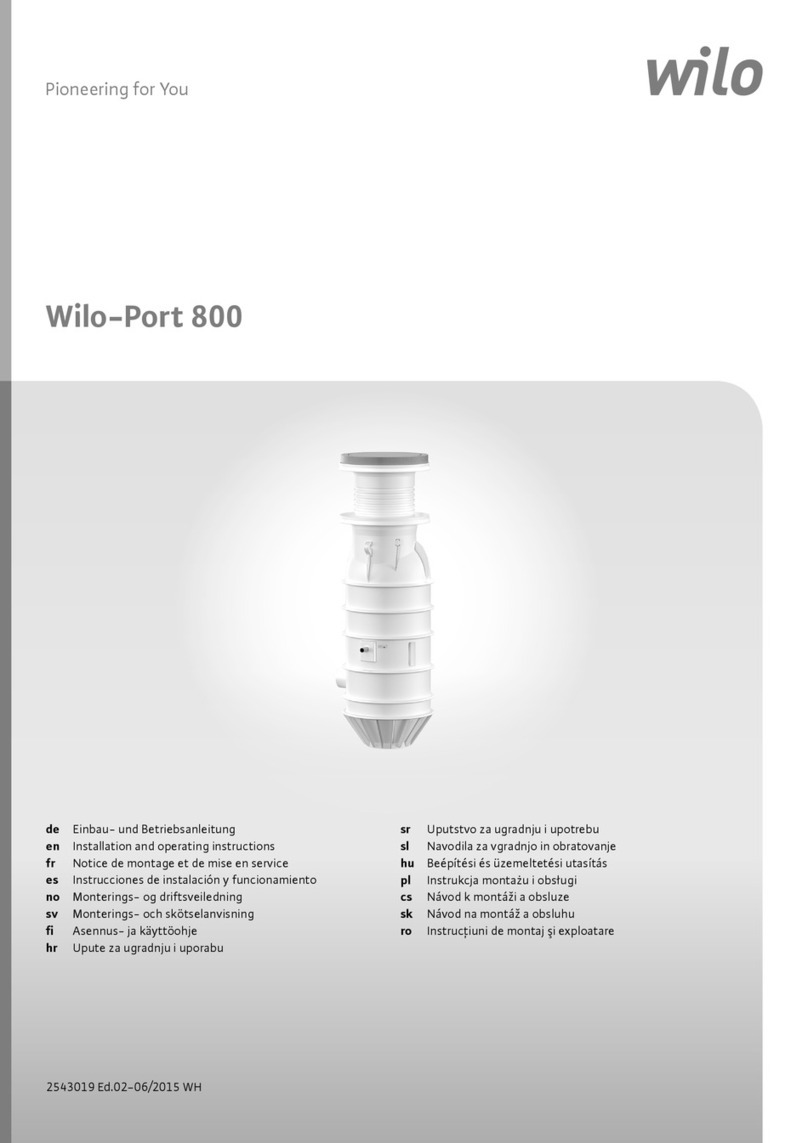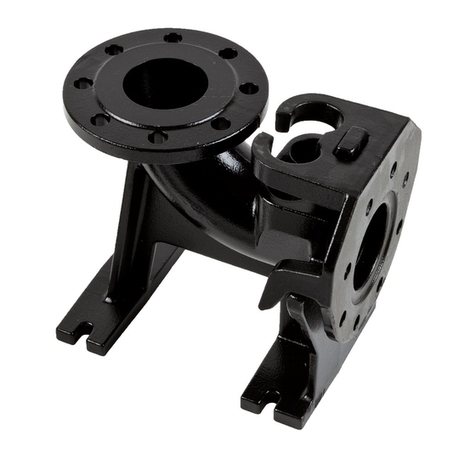
DEUTSCH
Bedienungshinweise
für den Betreiber
Sehr geehrter Kunde!
In diesem Kapitel wollen wir Ihnen die Funktionen
und die Bedienung der fertig installierten Anlage
erklären.
Lesen Sie aber auch bitte aufmerksam die in der ge-
samten Einbau- und Betriebsanleitung beschriebe-
nen Sicherheitshinweise.
Reparaturen an der Anlage sollten Sie dem Fach-
handwerk oder dem Wilo-Kundendienst überlassen.
Die Funktionen der Anlage laufen automatisch ab.
Eine Bedienung der Anlage ist nicht erforderlich.
Erforderlichenfalls ist eine Reinigung gemäß folgen-
dem Hinweis vorzunehmen.
Reinigung
Bei regelmäßigem Gebrauch reinigt sich die Anlage
selbst. Nur gelegentlich benutzte Anlagen sollten 1/4-
jährlich wie folgt auch innen gereinigt werden:
Netzstecker aus der Steckdose ziehen. Ein mildes
Reinigungsmittel in das WC-Becken geben und Spü-
lung betätigen. Nach ca. 5 Minuten Einwirkzeit den
Stecker wieder einstecken. Spülung betätigen, bis
die Pumpe einschaltet und den Behälter abpumpt.
Danach nochmals nachspülen.
Langfristig wird die Betriebssicherheit erhöht, wenn
einwandfreie Funktion und ruhiger Lauf der Pumpe
durch einen Fachbetrieb kontrolliert werden.
1. Allgemeines
Einbau und Inbetriebnahme nur
durch Fachpersonal!
1.1 Verwendungszweck
Automatisch arbeitende Kleinhebeanlage mit Schneid-
werk zur Entsorgung einer Einzeltoilette sowie zu-
sätzlich eines Handwaschbeckens, einer Dusche
und eines Bidet, deren Schmutz-/Abwässer nicht
mit natürlichem Gefälle dem Kanalsystem zugeführt
werden können und deshalb über die Rückstau-
ebene angehoben werden müssen. Die zusätzlich
angeschlossenen Entwässerungsstellen müssen sich
im selben Raum befinden (begrenzte Verwendung
der Kleinhebeanlage). Ferner muß ein weiteres WC
oberhalb der Rückstauebene zur Verfügung stehen.
Die Anlage ist besonders geeignet für die Entsorgung
von Toiletten und Duschen in Kellerräumen.
Für den Einsatz der Anlage sind grundsätzlich die
Normen DIN EN 12050-3, DIN EN 1256 sowie die
DIN 1986-100 einzuhalten.
Die Hebeanlage ist nicht geeignet zur Förderung von
festen Stoffen wie Hygieneartikel, Speisereste, lang-
faserige Stoffe oder von Lösungsmitteln, Fetten und
Öl. Der Anschluß einer Toilette mit Druckspülung ist
nicht zugelassen.
1.2 Anschluß- und Leistungsdaten
– Maximale Fördermenge: 4 m3/h
– Maximale Förderhöhe: 5,7 m
– Max. Fördermedien-Temp.: 35 °C
– Spannung / Frequenz: 1~230 V, 50 Hz
– Aufnahmeleistung: 0,45 kW
– Drehzahl: 2650 1/min
– Nennstrom: 2,1 A
– Betriebsart: S3 28 %, 36 s
– Schutzart: IP 44
– Druckanschluß: DN 25/32
– Zulauf: DN 100 mit
Dichtmanschette
– Nebenzuläufe: 2 x DN 40 nach
DIN 1986 incl.
Blinddeckel und
Manschette
– Entlüftung: 25 mm Außen-Ø
– Abmessungen B x H x T: 511 x 300 x 269 mm
– Nutzvolumen: 12 l
– Gewicht: 7,8 kg
Bei Ersatzteilbestellungen sind sämtliche Daten des
Anlagentypenschildes anzugeben.
2. Sicherheit
Diese Betriebsanleitung enthält grundlegende Hin-
weise, die bei Aufstellung und Betrieb zu beachten
sind. Daher ist diese Betriebsanleitung unbedingt vor
Montage und Inbetriebnahme vom Monteur sowie
dem zuständigen Betreiber zu lesen. Es sind nicht nur
die unter diesem Hauptpunkt Sicherheit aufgeführten
allgemeinen Sicherheitshinweise zu beachten, son-
dern auch die unter den folgenden Hauptpunkten
eingefügten, speziellen Sicherheitshinweise.
5


















